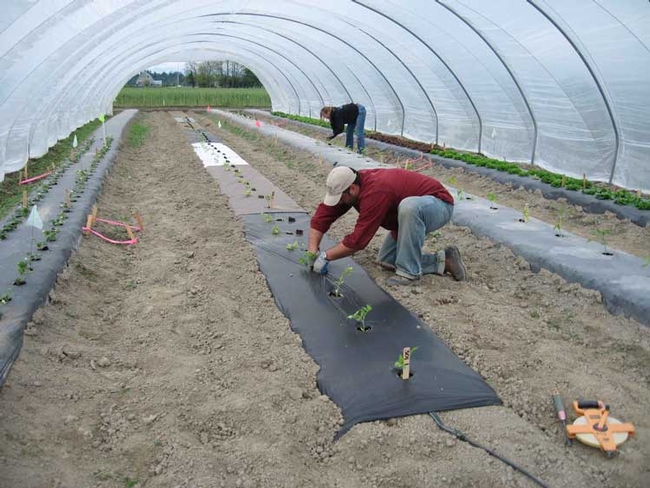From WeedsNews4791 | February 22, 2014 | 11:30 pm
Posted by Zheljana Peric
Abstract: For widespread adoption of biodegradable plastics as agricultural mulches, dependable biodegradation across contrasting conditions is necessary.? The in situ degradation of four potentially biodegradable mulches (two commercially available starch-based films, one commercially available cellulose paper mulch, and one experimental spunbond polylactic acid mulch) were evaluated by measuring percent area remaining (PMAR) after burial for 6, 12, 18 and 24 months in high tunnel and open field tomato production systems at three geographically distinct U.?S.? locations (Knoxville, TN; Lubbock, TX; Mount Vernon, WA).? The PMAR of the mulches did not differ between high tunnel and open field systems at any location, and PMAR of cellulose mulch was 0% within 12 months but >90% for experimental spunbond at 24 months.? The PMAR of the two starch-based products did vary by location, and was lowest at Lubbock (˜2%) compared to Knoxville (49%) or Mount Vernon (89%).? Relative to the other two locations, Lubbock had the greatest soil diurnal temperature range, maximum daily soil temperature, an alkaline soil pH and a microbial community structure characterized by a relatively high abundance of fungi.? Mulch type and geographic location exerted a greater influence on PMAR than did production system, and abiotic and biotic variables influenced degradation.? [Chenhui Li, Jennifer Moore-Kucera, Carol Miles, Karen Leonas, Jaehoon Lee, Andrew Corbin & Debra Inglis (2014).? Degradation of potentially biodegradable plastic mulch films at three diverse U.?S.? locations.? Agroecology and Sustainable Food Systems, online 20 Feb]
The Weed's News 4791
Original source

